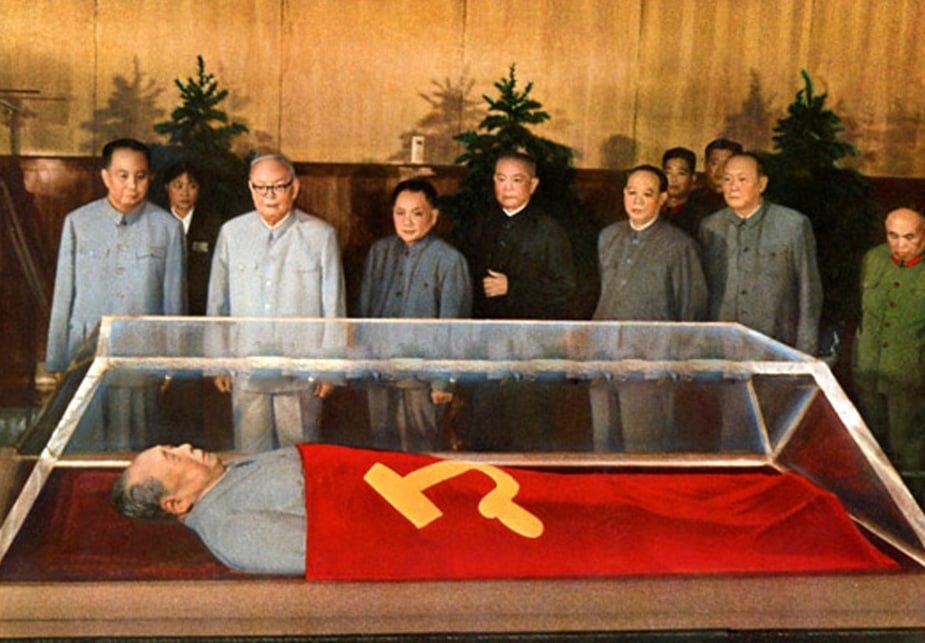Listen to my narration in the embedded player above.
At ten minutes after midnight on September 9, 1976, Mao Zedong died. He had been among the founders of the Communist Party and had led that party for nearly four decades. Under his leadership, the Communist Red Army had helped defeat the Japanese in World War II. It went on to overthrow the Republic of China to establish the People’s Republic that he had himself announced, standing atop Tiananmen, in October 1949.
Mao was, to this point in time, the only head of state the PRC had known. Under his leadership, China had recovered with remarkable speed from the devastation of World War II and fought the American army to an unlikely stalemate on the Korean Peninsula. Emboldened by those successes, he had led a series of catastrophic domestic initiatives. His Great Leap Forward led to a famine that claimed tens of millions of lives and derailed Chinese industrial and agricultural production. The Cultural Revolution, built around his cult of personality, was a disaster of unspeakable violence, disrupting China’s infrastructure in almost every arena, from government to education to foreign policy.
Even though he died almost 50 years ago, Mao is one of the few world leaders who meaningfully define an era to which we still belong: “Post-Mao” China. The label may now be too broad and incomplete, but it is still relevant in the way that “post-war” can be applied to Japan, or “interwar” to Europe. Richard Gordon and Carma Hinton’s documentary about 1989 succinctly places Mao’s death as “between an earthquake and a solar eclipse,” and its impact was certainly momentous, even though it was in many ways slow coming.
Death is always both profound and banal. Everyone dies; the details are familiar and commonplace. Yet, a sense of mystery accompanies it. Appropriately, then, Mao’s death was both far-reaching in its consequences and mundane to the point of comedy in its details.
Mao had prided himself on his physical well-being. His swim in the Yangtze at the start of the Cultural Revolution — though exaggerated — was meant to illustrate that. But his health was clearly failing. Meetings with foreign dignitaries were increasingly few — his meeting with Richard Nixon four years earlier was among the last. In his memoir, The Private Life of Chairman Mao, Mao’s personal physician Li Zhisui describes an endless stream of panicked interventions through the early 70s as doctors tended to problems with the Chairman’s heart, lungs, stomach, circulation, and more. In 1974, he was diagnosed with ALS, known colloquially in the US as Lou Gehrig’s disease, and in the first nine months of 1976, Li reports, he suffered at least three heart attacks. Mao was blind in one eye, could not walk reliably, and was on a constant stream of medications to combat various infections and chronic diseases.
Despite this, no plans had been made for his death. Li Zhisui attributes this to the political infighting at the highest levels of the party-state, as well as the laughable excesses of Mao’s cult of personality. At a time when something as simple as wearing the wrong badge or singing the wrong song could have disastrous consequences, no one was willing to risk planning around Mao’s death for fear it would be perceived as disloyal. As a result, in the small hours of September 9, a macabre comedy played out in Zhongnanhai.
Keep reading with a 7-day free trial
Subscribe to Sinica to keep reading this post and get 7 days of free access to the full post archives.




